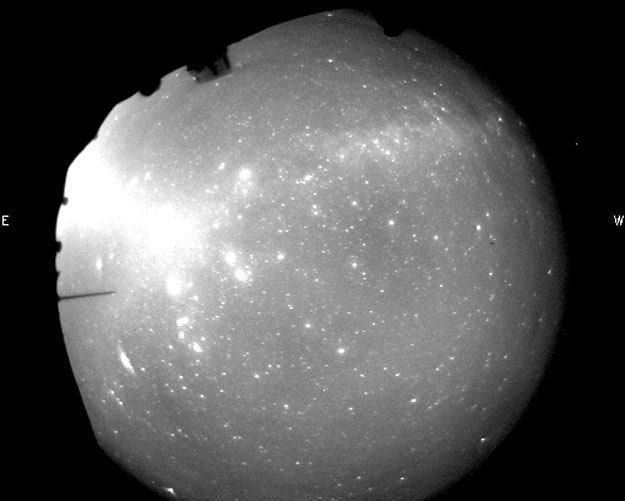
|
Credit & Copyright: The CONCAM Project,
NSF
Explanation:
An unusual triangle of light will be particularly
bright near the eastern horizon before sunrise
during the next two months for observers in Earth's northern
hemisphere.
Once considered a false dawn, this triangle of light is actually
Zodiacal Light, light reflected from
interplanetary dust particles.
The triangle is clearly visible on the left of the
above frame taken from
Mauna Kea in
Hawaii on August 30 by one of the developing
global network of
fisheye nighttime web cameras
called CONCAMs.
Zodiacal dust
orbits the
Sun
predominately in the same plane as the planets: the
ecliptic.
Indeed, the triangle points to bright spots
Jupiter and Saturn,
with Saturn nearer the center.
Zodiacal light is so bright this time of year because the
dust band is oriented
nearly vertical at sunrise,
so that the thick air near the horizon does not
block
out relatively bright
reflecting dust.
Zodiacal light is also bright for
people in Earth's northern hemisphere
in March and April just after sunset.
|
January February March April May June July August September October November December |
| ||||||||||||||||||||||||||||||||||||||||||||||||
NASA Web Site Statements, Warnings, and Disclaimers
NASA Official: Jay Norris. Specific rights apply.
A service of: LHEA at NASA / GSFC
& Michigan Tech. U.
Based on Astronomy Picture
Of the Day
Publications with keywords: zodiacal light
Publications with words: zodiacal light
See also:
